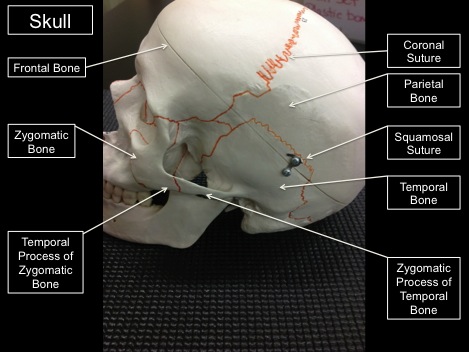
Lumbar – L1 to L5, the next 5 vertebrae that form the inner curvature of the spine.Thoracic – T1 to T12, the next 12 vertebrae that form the outward curvature of the spine.Cervical – C1 to C7, the first 7 vertebrae in the neck region.The vertebral column is curved, with two primary curvatures (thoracic and sacrococcygeal curves) and two secondary curvatures (cervical and lumbar curves). The vertebrae are divided into three regions: cervical C1–C7 vertebrae, thoracic T1–T12 vertebrae, and lumbar L1–L5 vertebrae.
#ONLY MOVABLE BONE IN THE FACIAL SKELETON PLUS#
The adult vertebral column consists of 24 vertebrae, plus the sacrum and coccyx. It also protects the spinal cord, which passes down the back through openings in the vertebrae. It is a flexible column that supports the head, neck, and body and allows for their movements. Together, the vertebrae and intervertebral discs form the vertebral column. It consists of a sequence of vertebrae (singular = vertebra), each of which is separated and united by an intervertebral disc. The vertebral column is also known as the spinal column or spine (see Figure 6.2). The axial skeleton has 80 bones and includes bones of the s kull (and face), v ertebral column, and t horacic cage.

The skeleton is subdivided into two major divisions: the axial and appendicular. The bone marrow found within bones stores fat and houses the blood-cell-producing tissue of the body. The bones of the skeleton serve as the primary storage site for important minerals such as calcium and phosphate. It protects the internal organs, including the brain, spinal cord, heart, lungs, and pelvic organs. In addition to providing for support and movements of the body, the skeleton has protective and storage functions. The primary functions of the skeleton are to provide a rigid, internal structure that can support the weight of the body against the force of gravity, and to provide a structure upon which muscles can act to produce movements of the body. Younger individuals have higher numbers of bones because some bones fuse together during childhood and adolescence to form an adult bone. For adults, there are 206 bones in the skeleton. The skeleton consists of the bones of the body. The skeletal system includes all of the bones, cartilages, and ligaments of the body that support and give shape to the body and body structures. Anatomy (Structures) of the Skeletal System


 0 kommentar(er)
0 kommentar(er)
